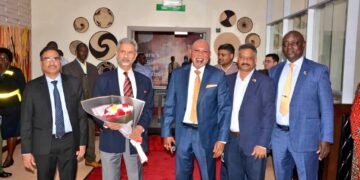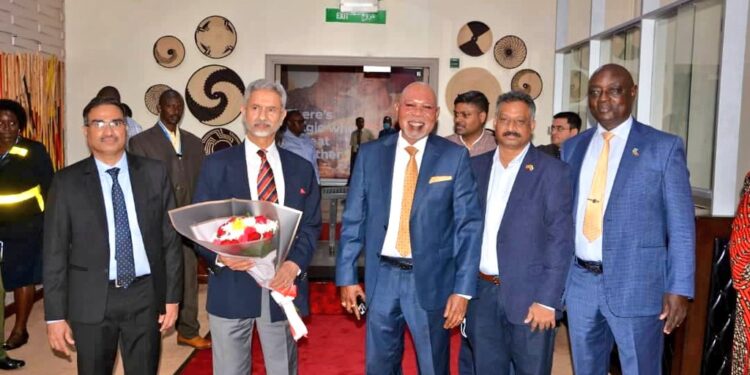Dr S. Jaishankar, the External Affairs Minister of the Republic of India, has arrived in Uganda
for a three-day official visit.
The Minister arrived Monday evening at the VVIP lounge of Entebbe International Airport and was received by Ugandan Foreign Minister, General Jeje Odongo, and Minister of Defence and Veterans Affairs, Vincent Ssempijja, as well as the Indian High Commissioner Ajay Kumar.
The Ugandan Foreign Ministry said the main objective of EAM Jaishankar’s visit is “to further bolster the excellent cordial bilateral relations between both countries”.
“Dr. S. Jaishankar, the Minister of External Affairs (MEA) of the Republic of India will undertake a working visit to Uganda from 10th – 12th April 2023. The main objective of this visit is to further bolster the excellent cordial bilateral relations between both countries.”
In a tweet, the EAM said he is looking forward to productive discussions to take forward South-South cooperation.
“Arrived in Uganda this afternoon Glad to be received by Foreign Minister General Jeje Odongo and Minister of Defence and Veterans Affairs, Vincent Ssempijja Look forward to productive discussions to take forward South-South cooperation,” he tweeted.
During his visit to Uganda, he is expected to hold delegation level talks with his counterpart Foreign Minister of Uganda General Jeje Odongo.
He is also expected to call on President Yoweri Museveni at the State House, and meet other Ministers.
The EAM will also inaugurate the transit campus of the National Forensic Science University (NFSU) in Jinja.
A bilateral MoU between the Government of India and Government of Uganda, on setting up of the first ever campus of NFSU outside India, is likely to be signed during the visit.
Jaishankar will also participate in the ground- breaking ceremony of a solar powered water supply project in Uganda.
He will also address the trade and business community of Uganda and have an interaction with the Indian diaspora.
There are around 30,000 Indians in a country of nearly 50 million, accounting for less than one percent of the population, yet they contribute to 65 percent of the government revenues in the form of taxes.









